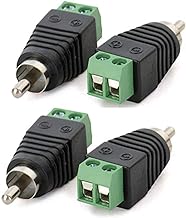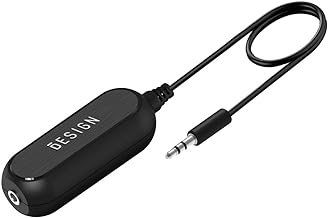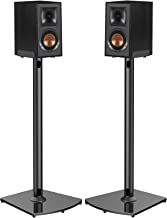Choosing the right computer microphone for speech-to-text is an important decision that can greatly affect how well spoken words are turned into written text. There are many options to choose from, so it is crucial to think about key factors like microphone type, how it connects to the computer, how well it cancels out background noise, and if it works with your computer. These factors all play a big part in making sure the microphone works well and gives you a good experience. By understanding these important aspects, you can make a smart choice that fits your needs and helps you get the most out of this helpful technology.
See our guide to the best computer microphone for speech to text.
Microphone type (condenser or dynamic)
When choosing a microphone for converting speech to text, deciding between condenser and dynamic microphones can make a big difference in how well it performs overall. Condenser microphones are great for capturing a wide range of frequencies and picking up speech details accurately, which helps with converting speech to text more precisely. On the other hand, dynamic microphones are sturdy and can handle loud sounds well, making them a reliable choice for everyday use. They also help reduce background noise, which is important for getting accurate speech recognition.
When deciding between condenser and dynamic microphones for speech-to-text, it’s important to think about your own preferences and where you’ll be using the microphone. Condenser microphones are best for quiet environments and provide excellent sound quality, making them popular for professional speech-to-text tasks. Dynamic microphones, on the other hand, are more versatile and durable, making them a practical choice for casual users or places with a lot of noise. Whether you go for the detailed sound of a condenser microphone or the toughness of a dynamic one, understanding the differences between the two will help you pick the right microphone for your speech-to-text needs.
Directionality (omnidirectional or unidirectional)
When you’re choosing a computer microphone for speech-to-text purposes, deciding between omnidirectional and unidirectional options can make a big difference. Omnidirectional microphones pick up sound from all directions, which makes them great for group meetings or conference calls. On the other hand, unidirectional microphones focus on sound from only one direction, which helps reduce background noise and make voices clearer.
For individuals working alone and using speech-to-text software, a unidirectional microphone might be better for accurately transcribing speech without distractions. Since the main goal of a computer microphone for speech-to-text is to capture clear audio, the unidirectional microphone is the preferred choice for getting the best results. By isolating the speaker’s voice and reducing external noise, unidirectional microphones offer a more efficient solution for turning spoken words into text accurately and consistently. This feature improves the performance of voice recognition software, making it easier for users to dictate and creating more precise transcriptions. Ultimately, if you prioritize a unidirectional microphone when choosing one for speech-to-text tasks, you can expect a smoother and more productive experience in different work settings.
Frequency response range
When you’re choosing a microphone for converting speech to text on your computer, it’s important to pay attention to the frequency response range. A wider frequency range usually means the audio will be clearer and more accurate, which makes for better transcription and overall performance. Having a microphone with a broader frequency range can improve the quality of your voice input and reduce background noise, making speech recognition work better.
In addition, a microphone with a wider frequency response range can pick up the subtle variations in your voice, capturing the fullness and richness of your speech. This can significantly improve the accuracy and user experience when using speech-to-text technology. Investing in a high-quality microphone with an extended frequency range might cost a bit more, but the benefits of better transcription accuracy and user satisfaction make it a smart choice for anyone looking to improve their speech recognition setup.
Noise cancellation technology
When looking for a computer microphone for converting speech to text, it’s important to choose one with noise cancellation technology. This feature helps capture your voice accurately without being affected by background noise. Using a microphone with noise cancellation not only improves the performance of your speech recognition software but also enhances the quality of your audio recordings. This feature reduces errors and ensures a smooth user experience.
In the world of speech-to-text technology, clear audio input is crucial. Noise cancellation technology is essential for eliminating unwanted sounds and distractions, leading to more precise transcriptions. Prioritizing a microphone with excellent noise cancellation capabilities can improve your workflow and help you succeed in various tasks, such as transcribing meetings and writing documents effortlessly. Including noise cancellation technology in your computer microphone can significantly enhance your speech-to-text experience, boosting accuracy and efficiency.
Connectivity options (USB or XLR)
When choosing between USB and XLR connections for a computer microphone used for speech-to-text, it’s important to think about the differences each option brings. USB microphones are easy to use and great for quick setup, making them a good choice for beginners or anyone looking for simplicity. They don’t require extra equipment and can be easily added to any computer setup. On the other hand, XLR microphones offer top-notch sound quality and reliability, especially important for professional speech-to-text applications. The balanced connection of XLR cables helps reduce interference and ensures a clear signal, leading to high-quality recordings crucial for accurate transcriptions.
While USB microphones are convenient and user-friendly, they may not provide the level of audio precision needed for advanced speech-to-text software. In comparison, XLR microphones are excellent at capturing subtle vocal nuances and reducing background noise, improving the accuracy and quality of transcribed content. Choosing an XLR microphone shows a dedication to top performance, especially in environments where precise speech recognition is crucial. Even though XLR connections may be more complex to set up initially, their exceptional sound quality makes the extra effort worthwhile, making them the preferred option for individuals and professionals aiming for top results in their speech-to-text work.
Conclusion
In today’s society, where we are always looking for ways to make things easier and more efficient, using a computer microphone for speech-to-text is a big technological advancement. This tool helps simplify tasks and make it easier for people to use their devices. It also allows individuals with disabilities to communicate more easily. The use of computer microphones is changing how we interact with technology and is making it possible for everyone to have their voice heard through easily transcribed words.


